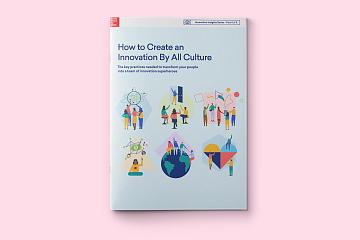Changing company culture, Leadership & Management
If everyone cared about organizational culture as you and I did, every company would put creating a great culture as its top priority.
Of course, that’s not the world we live in.
It's a pleasant daydream to picture a world where culture-building initiatives move forward without any pushback. When we snap back to reality, though, a critical first step toward improving culture remains: we have to convince other company leaders that great culture isn't just a nice to have, it's a business imperative.
Since not all decision-makers share the background, worldview or priorities that HR do, getting this buy-in is both essential and challenging.
Here’s the good news: with some strategic planning and forethought, you can create alignment and get the approval you need.
So how do you get executive buy-in for improving workplace culture?
1. Take a holistic view
Workplace culture is like the human body - if you have a pain in your knee, it’s probably connected to that creaky hip.
Many aspects of organizational culture are closely related. For example, strong communication practices tend to improve employees’ perceptions of leadership effectiveness. Or when employees feel encouraged to bring their whole selves to work, they feel more psychologically and emotionally safe.
By taking a holistic view and understanding the connections like these that exist between different facets of the employee experience, you can package a culture initiative as a way of addressing a business need that leadership has already identified.
2. Connect culture to the company’s strategy
If you present culture improvements as a new initiative, you may face an uphill challenge. After all, most companies have a full plate of initiatives already.
When you can align culture with broader company goals, on the other hand, executives are more likely to buy in. The key is to find a way to fold your strategy into something that your manager is already investing time and resources into.
For example, let’s suppose that:
- You know leadership is interested in finding ways to improve customer service
- You've conducted an employee engagement survey
- That survey found that employees who feel that the company’s service is poor are far more likely than other employees to feel that management doesn’t do a good job assigning and coordinating people
You could then recommend that managers receive training on how to delegate responsibilities and build successful teams.
Since that recommendation serves both your goal of improving company culture and leadership’s goal of improving customer service, it’s far more likely to get executive buy-in than a recommendation that only focuses on the culture benefits of such training.
4. Communicate the business case clearly
Creating a great culture helps a company’s bottom line in several ways. However, not all leaders are aware of the financial benefits of positive company culture.
It’s up to you to enlighten them. By showing executives the business case for a high-trust culture, you’ll make it easier for them to throw their support behind your initiatives.
To maximize buy-in, it’s essential to make sure leaders have a clear understanding of:
- What you propose
- How you’ll execute your plan
- What the benefits will be to the business.
5. Draw from research
When you’re trying to get leaders on board for specific initiatives, having data in hand makes a huge difference.
One way to help others understand the value of your initiatives, leverage third-party research.
Great Place To Work® has been publishing research-based reports for decades. These reports can help you assign clear value to the initiatives you are putting forward.
It's easier to see the value of collaboration, for example, when you see research that proves it improves employee retention and innovation. Likewise, it’s easier to see the value of engaging women in the workplace when you see that research proves workplace diversity drives better business performance.
6. Leverage your people data
Another powerful way to explain why an initiative is important is to back it up with your own company’s people data.
For example, at a company we studied recently, we found that employees were 11 times more likely to want to work there for a long time if they found special meaning in their job. This data ties a culture goal (finding more meaning in work) directly to a metric (long-term retention) that every business leader cares about. The data is also specific to the organization, which helps build confidence in its importance.
If you don’t already have internal people data, your first step here is to start collecting it. Using an employee engagement survey, you can take the fuzziness out of your employee experience and back up your claims about the importance of culture with hard data.
When you survey your employees, you can find gaps in experience within demographic groups or teams. Our platform enables you to drill down deep into the data and understand whose experience stands to improve with new culture initiatives.
7. Show how you will measure success
Like any initiative, others will want to see your goals and how you’re measuring success.
Before you seek buy-in for your culture changes, it's a good idea to know what success looks like and how you'll measure results. That way, you can give leaders a quantifiable way to see that the changes you implement are having the desired effect.
Periodic or pulse surveys are useful here. First, get a baseline on your employee experience and send an employee engagement survey. Then, set a goal for your culture initiative. After you have rolled it out, send pulse surveys at different stages to see the impact your new program is making.
This data also helps you keep leadership updated on your progress and creates opportunities to discuss culture with them on an ongoing basis.
8. Make space for questions
In the field of organizational culture, you're never done listening.
Even if you’ve followed the recommendations above, leaders may have doubts, concerns, or insecurities around what you're proposing.
It’s critical to make sure leaders have a forum for questions and open discussion. When they can get answers to questions and assuage their concerns, they’re going to feel more comfortable supporting you enthusiastically.
Creating great company culture takes a unified team effort. By taking a strategic approach to getting executive buy-in for your vision, you set yourself up for support before, during and after your next culture initiative.
Ready to start surveying your employees and getting the people data you need to drive cultural change? Learn more about our employee engagement platform today.














